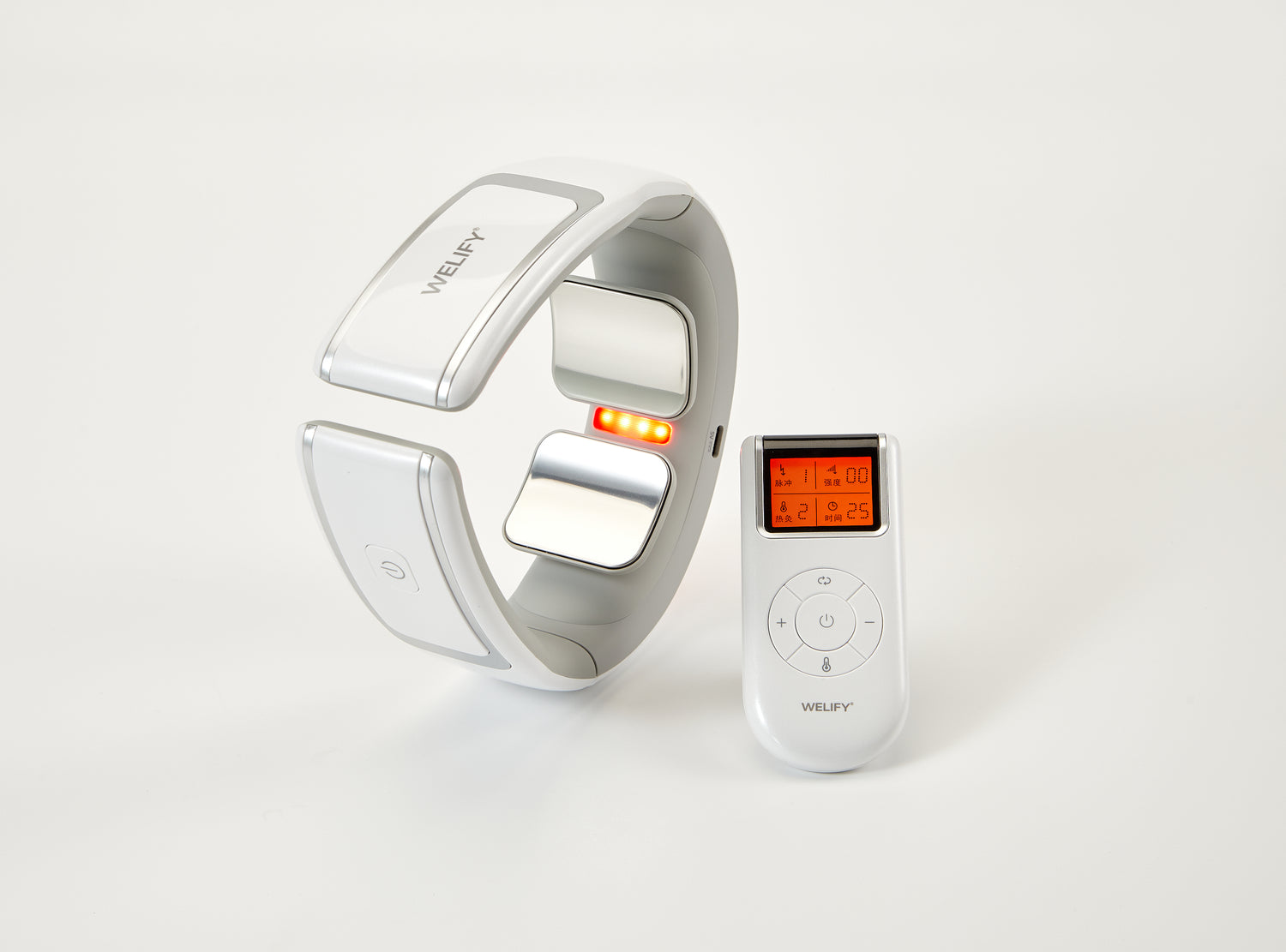Pain, a complex phenomenon, has long been the focus of medical research. Over the years, science has developed various methods to understand and relieve pain.
Transcutaneous electrical nerve stimulation (TENS) is one of the most fascinating techniques in this endeavor. By using electrical impulses to "trick" or "block" the body's natural pain pathways, TENS has become a popular therapeutic intervention for many pain conditions. But how does it actually work?
The neurological basis of pain
Before diving into how TENS works, we need to understand the basics of how the body perceives pain. When we are injured or experience a painful stimulus, damaged tissues send out signals through specific nerve fibers, known as nocioceptors, to the spinal cord and further up to the brain. Here the signals are interpreted as pain. This is the body's way of warning us of potential harm.
The Gate Control Theory: First Clues to TENS Function
The most prominent theory behind the function of TENS is the so-called Gate Control theory, proposed by Melzack and Wall in the 1960s 1 . The theory describes that the nervous system can process only a certain amount of information at a time, which is similar to how a gate can be open, half-open or closed.
Let's imagine that the pain impulses are people trying to pass through a gate. When the gate is fully open, all persons (pain impulses) can pass freely to the brain, and we feel the pain. However, if the gate is closed or reduced in opening, the number of people who can pass through is reduced, resulting in less pain.
TENS exploits this theory by sending other, non-painful sensory signals (such as the electrical impulses) through the skin. These "competing" signals can "close the gate" to the pain impulses, preventing them from reaching the brain and thereby reducing or eliminating the perception of pain.
Endorphin production: Another possible mechanism
In addition to the Gate Control theory, research has suggested that TENS can stimulate the production of the body's natural pain-relieving chemicals, known as endorphins 2 .
Endorphins are often referred to as the body's "natural pain relievers" or "happy chemicals." They are peptides produced by the central nervous system and pituitary gland and act as neurotransmitters.
When endorphins are released, they interact with opiate receptors in the brain to reduce the experience of pain. This mechanism may explain why some individuals report a "euphoric" or "relaxing" feeling after TENS treatment.
Several studies have suggested that TENS can indeed stimulate the release of endorphins. For example, research has shown that the use of TENS can increase the levels of beta-endorphin (a special type of endorphin) in the cerebrospinal fluid .
Other studies have shown that people treated with TENS experience an increased pain threshold, indicating a pain-relieving effect possibly due to endorphin release .
TENS in practice
To maximize the effectiveness of TENS treatment, it is important to adjust the settings correctly. This includes adjusting the pulse rate, pulse width and amperage. This applies to both Welify NovaBelt and Welify Neck Massager.
Summary
TENS is a unique and innovative technology that tackles the complexity of pain by affecting how pain signals are processed and interpreted by our nervous system. By both "closing the gate" to pain impulses and possibly increasing the production of endorphins, TENS offers a dual approach to pain relief, making it a valuable tool in the world of pain therapy.
References:
1. Melzack R, Wall PD. Pain mechanisms: a new theory. Science. 1965;150(3699):971-979.
2. Garrison DW, Foreman RD. Decreased activity of spontaneous and noxiously evoked dorsal horn cells during transcutaneous electrical nerve stimulation (TENS). Pain. 1994;58(3):309-315.


